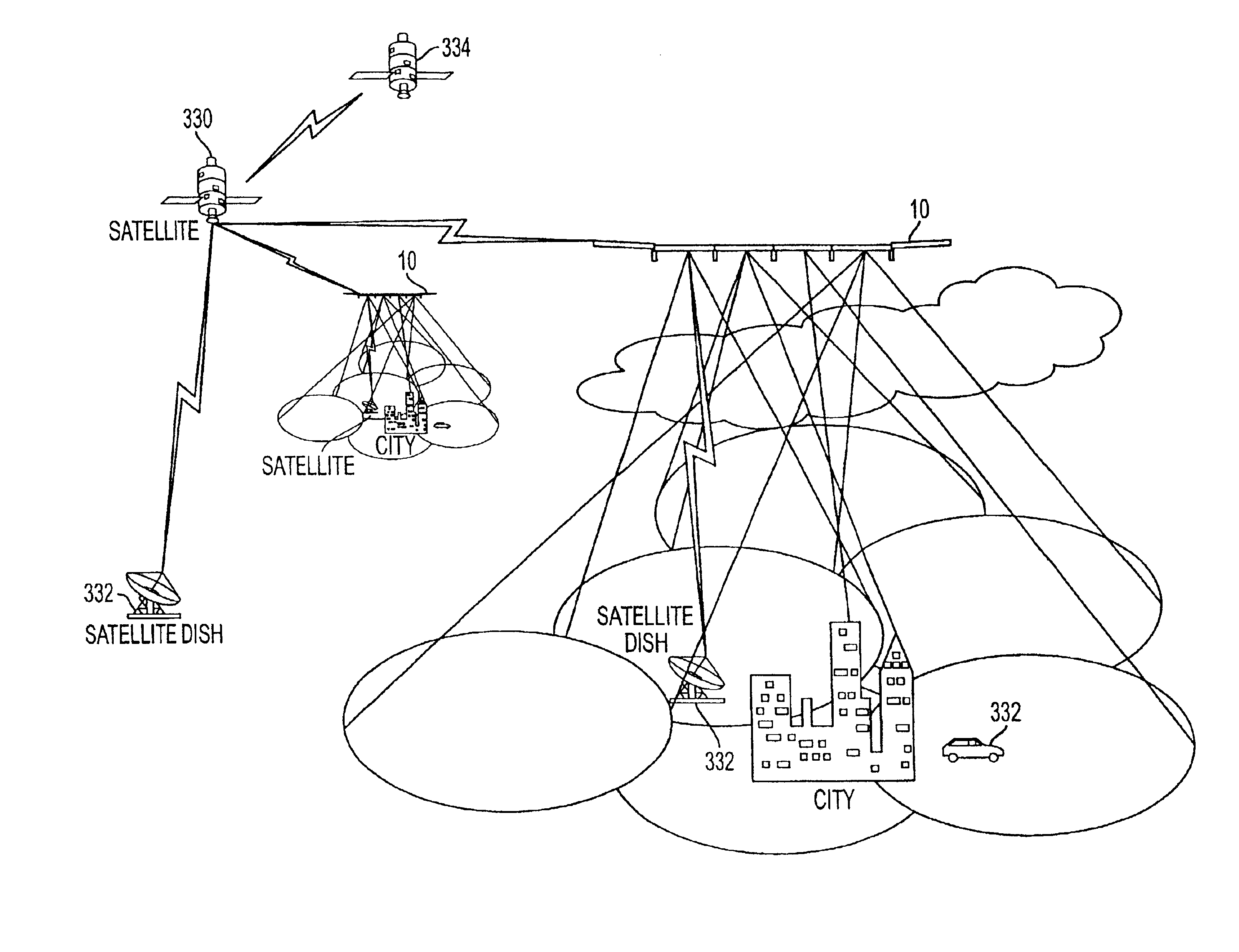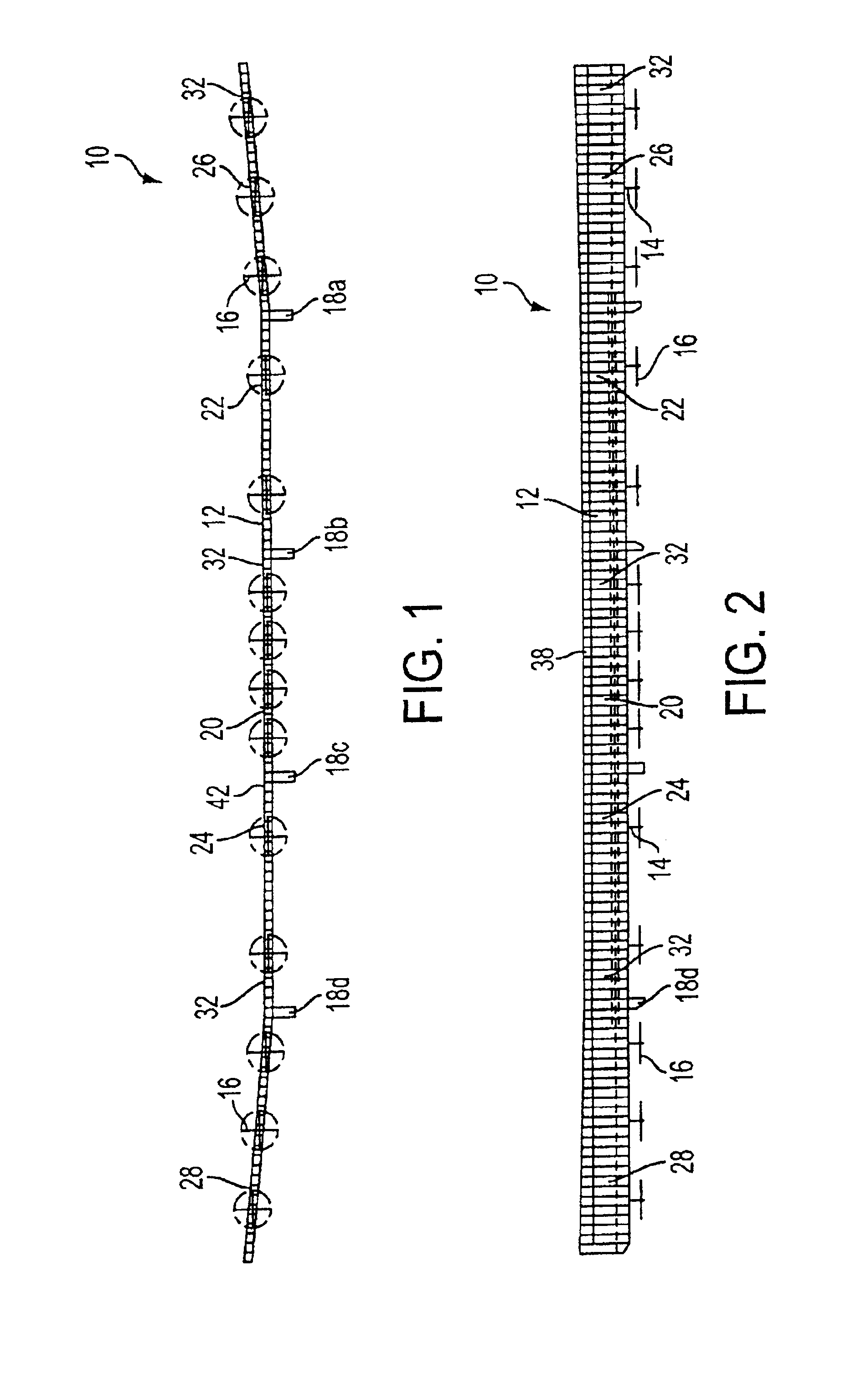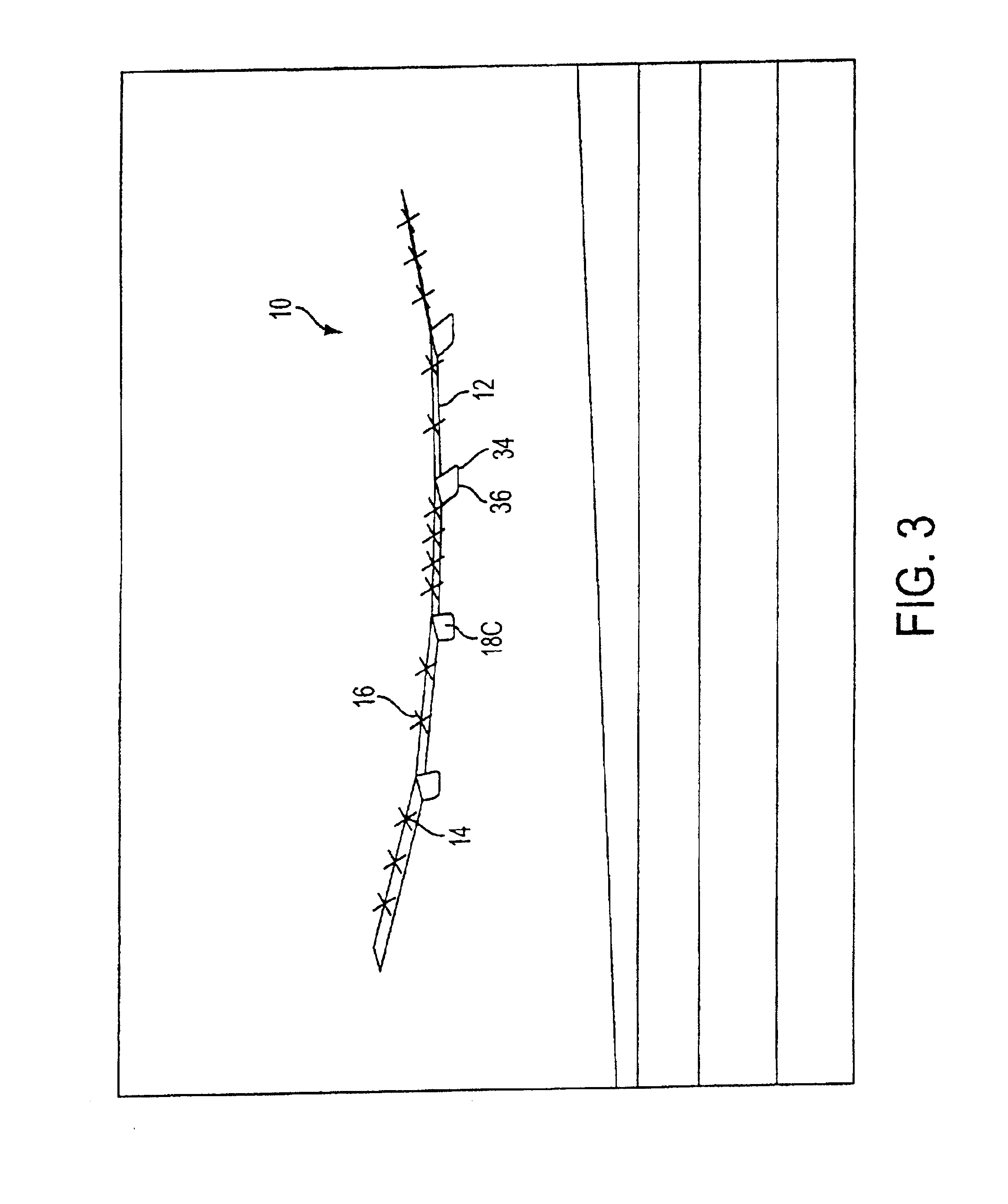Aircraft control method
a technology of control method and wing, which is applied in the direction of energy-efficient board measures, wireless commuication services, instruments, etc., can solve the problems of wing developing a substantial dihedral angle at the wingtip, limited flight duration of most remarkable aircraft, and limited power and payload limitations, etc., to achieve the effect of less expensive production and less expensive production
- Summary
- Abstract
- Description
- Claims
- Application Information
AI Technical Summary
Benefits of technology
Problems solved by technology
Method used
Image
Examples
first embodiment
[0064]The first embodiment is designed as a spanloader, with each of the segments designed to substantially support their own weight during flight, and thereby avoid significantly loading any other segment. This allows each segment to be quite flexible, and also allows the joints between the sections to include some flexibility having low stiffness (i.e., high flexibility) requirements allows the aircraft structure to be built at a minimum weight.
[0065]Preferably, there are no rudders or ailerons on the preferred embodiment of the aircraft 10, thereby further allowing the wing to be flexible. The only active control surfaces are elevators 38, which are situated along a large portion of the wing's trailing edge. In typical form, the elevators are actuated in tandem to change the aircraft's angle of attack. However, in other embodiments, some of the elevators could be configured for use as ailerons (i.e., configured as elevons).
[0066]The aircraft 10 controls yaw, and thereby turns, us...
fourth embodiment
[0097]In sum, the hinge actuator can be of a wide variety of designs both as a mass actuator and otherwise. Various actuators (e.g., linear actuators, motorized arm actuators, screw / gear actuators, pulley actuators, hydraulic actuators, gas pressure actuators, aerodynamic actuators such as tabs, and the like) are known for a variety of uses, and their potential use for the hinge actuator is contemplated within the scope of the invention. Furthermore, combinations of hinge actuators can be used where desirable. For example, the invention, being the pitching of local areas within wing segments, can be employed to the extent allowed by wing torsion tolerances, and additional hinge actuation can be provided by a hinge motor.
[0098]Furthermore, while the described embodiments of active dihedral control are employed on an aircraft having numerous, flexible, non-swept segments of constant airfoil and chord, they can likewise be employed on other aircraft designs including conventional aircr...
PUM
 Login to View More
Login to View More Abstract
Description
Claims
Application Information
 Login to View More
Login to View More - R&D
- Intellectual Property
- Life Sciences
- Materials
- Tech Scout
- Unparalleled Data Quality
- Higher Quality Content
- 60% Fewer Hallucinations
Browse by: Latest US Patents, China's latest patents, Technical Efficacy Thesaurus, Application Domain, Technology Topic, Popular Technical Reports.
© 2025 PatSnap. All rights reserved.Legal|Privacy policy|Modern Slavery Act Transparency Statement|Sitemap|About US| Contact US: help@patsnap.com



